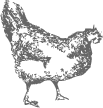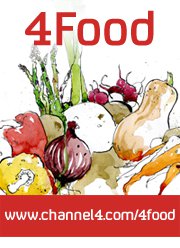
There’s a recipe this week, for a delicious cooling summer salad with herbs, salmon cucumber and spelt. But first a digression into the world of wholegrains and spelt, with a couple of labelling tricks for savvy shoppers to be on the look out for.
There is a surprising amount of nutrition hocus-pocus on the web and in magazines about spelt. Apparently it is “easier to digest” and “better for you than wheat”. The digestive claims could have some substance to them (for one group of the population) if spelt was gluten free. In reality if you have coeliac disease with its accompanying immune response to gluten then spelt is not suitable for you; it is not gluten-free.
For those of us who don’t have coeliac disease, is spelt better for you? So hard to say with any great conviction! Every grain has its subtle distinguishing features (a little more protein here, a bit more of this mineral). While spelt bread “with bits in” has been shown to be low GI like most other similar breads, there still don’t seem to be any reliable results for spelt itself regarding glycaemic index.
The big selling point for spelt therefore (in addition to the lovely nutty taste) is all of that wholegrain goodness with its associated fibre and cardioprotective benefits. Something to be found in all wholegrain products, even those made from spelt’s much maligned cousin, wheat. But as is so often the case with food, you need to look carefully at the label to be sure that you are getting what you think you you are.
Is your wholegrain still whole?
Certain ingredients just have an aura of healthy goodness surrounding them don’t they? Spelt is one of those; nobody says nasty things about spelt in the same way they do wheat. Spelt is a whole grain, right? Well kind of. Spelt is a wholegrain if it is a left as a wholegrain, but can be milled and processed until it is no longer “whole” just like any other grain can. I put my hand up to falling for this one; upon closer inspection at home my newly purchased spelt wholegrains were actually not whole at all but semi-pearled; somewhere between wholegrain and refined.
It pays to read the label closely on “wholegrain” products. Look out for terminology such as pearled, polished, multi-grain; these products are generally not wholegrain. Flaked, cracked and ground may or may not be made using the whole grain.
How much of a wholegrain serving will you get from your bread?
Shopping for wholegrain bread is incredibly complicated these days. There are many products that look brown and good for you and bursting with wholegrains but that in reality contain very little that is wholegrain or good for you. Marion Nestle succinctly summarises all of her careful research into the state of modern breadmaking with these simple tips for label reading:
Look for “100 percent on the label, whole wheat flour as the first ingredient, 2 grams of fiber per ounce” (Marion Nestle, What to Eat). An ounce is about 30 grams to metric types – about the weight of a slice of bread.
All grain processing isn’t necessarily bad; without any processing at all the majority of grains would be too irritating to the gut to be digestible and would contain such large quantities of a group of compounds called phytates that our bodies would be able to absorb little or no minerals from the grains. As with everything, there’s a balance to be had. I was very happy with my semi-pearled spelt but will remember to check more carefully for a wholegrain product next time.
 This herb, salmon and spelt salad recipe is just as at home as an offering for a summer party as for a cooling packed lunch during the summer. There are easy modifications for vegans and those who do not eat fish (much of the chopping and cooking remains the same so I suspect it wouldn’t be too much work to make two different versions for barbecue or potluck):
This herb, salmon and spelt salad recipe is just as at home as an offering for a summer party as for a cooling packed lunch during the summer. There are easy modifications for vegans and those who do not eat fish (much of the chopping and cooking remains the same so I suspect it wouldn’t be too much work to make two different versions for barbecue or potluck):
- Vegans can substitute silken soy for the dairy in the dressing (between this and the spelt there would be a reasonable serving of protein in the dish).
- For a non-fish option use chopped hard boiled eggs in place of the salmon
- Consider boosting the vegetable content and reduce the grain content a
little if you are making this for a packed lunch and won’t be having
any other vegetables at your mealtime. Try blanced asparagus or peas
(frozen peas would be just fine).
Recipe for Summery herb, salmon and spelt salad
Serves 4 to 6 people. The dill really makes this dish so don’t be tempted to skip it but the other herbs can happily swap for whatever is green and fresh.
2 salmon fillets
Sprig each of dill and parsley
3 black peppercorns
Half an onion (whole)
200g uncooked spelt (preferably wholegrain)
Half a cucumber, deseeded and chopped into small pieces
Yogurt and herb dressing
3 tbsp thick yogurt
1 Tbsp half fat creme fraiche
2 Tbsp parsley, finely chopped
2 Tbsp dill, finely chopped
1 Tbsp chives, finely chopped
Salt and Pepper to taste
Put the spelt on cook according to the packed instructions. Once the spelt is cooked rinse it under cold water immediately to prevent it from cooking further.
Place the salmon into a deep frying pan with the peppercorns, onion and sprigs of herbs. Add cold water until the salmon is just covered. Poach the salmon fillets by keeping heating until they are just below simmering point for five minutes. Remove the salmon from the pan and allow to cool.
Mix the yogurt, crème fraiche and herbs together to form a dressing.
In a large bowl flake the salmon (taking care to remove any bones you encounter) and add the cucumber and cooked, cooled spelt.
Add the dressing to the salmon, spelt and cucumber mix and season to taste.
Serve cold.

 Come join me on Twitter
Come join me on Twitter Sophie Roberts is a registered dietitian based in Oxford, UK. She loves combining her nutrition know-how with a sustainable approach to buying and preparing food and shares her tips and recipes here at Mostly Eating.
Sophie Roberts is a registered dietitian based in Oxford, UK. She loves combining her nutrition know-how with a sustainable approach to buying and preparing food and shares her tips and recipes here at Mostly Eating. 
{ 12 comments }
Thank you for this information. It can be overwhelming to deal with food labels, and it is very instinctive to just assume something like spelt is healthy, toss it in the basket, and not even take a look at the label. Like, a few days ago, I bought a bag of carob powder without realizing it was absolutely loaded with additional sugars! Anyway, this post was very informative.
And, great salad!
thanks for a useful post – I have found spelt quite confusing but am starting to understand it – I liked it when you suggested people might want to eat it because of its flavour – that seems a sensible reason to eat a grain – not just for health benefits
Thanks for the information. I find myself so skeptical these days about claims manufacturers make. Hard to separate truth from marketing.
This sounds absolutely divine! Adore dill, especially with salmon. One of my splurge meals is a creamy pasta with both of these. Suspect your dish might fend off the craving often I get for it.
Gorgeous photos, as always. :)
Thanks Sophie, that was really interesting. It’s funny as I was just discussing this with someone the other day. I eat spelt bread which I get from a great bakery down the road. I’ve never actualyl asked them how refined it is though so I will. What confuses me is that I eat spelt bread because I find wheat bread makes me very bloated and feely sleepy and sluggish, yet I am not allergic to gluten. I often wonder if I have a mild intolerance and I can just take spelt better. I also love the flavour of it though – nutty, as you say. I like it with smoked salmon for indulgent moments!!
I love the cooling dressing on this salad, perfect for the hot weather we’ve been having! I don’t know about Oxford though – I swear it was alwasy 5 degrees colder than everywhere elese when I was living there!
Wow this looks amazing i am just going to have to go home after work and cook it!
First I love what you did with the spelt – the recipe sounds totally delicious!
Living in Germany I was introduced to spelt quite some time back. First through the breads we would buy here then later from my organic stores for my granola and cooking. I think it makes a great addition to your daily meal plan. I often buy spelt flakes that I use in my granola and after it has been roasted in the oven I just adore that lovely nutty flavor!
Ah the old spelt is better than wheat chestnut. Good post Sophie.
I’ve certainly found people who “tolerate” spelt better than bog-standard wheat. But you’re right if you’re coeliacs or have a wheat allergy, spelt isn’t for you.
Well done for spotting your spelt was pearled. I’m not even sure you can get the whole grain here. I seem to be having problems finding grains in their whole / berry form. Everything is pearled, cracked or hulled.
Reminds me I must investigate the new food standards here in Australia – there’s something in there about the use of “wholegrain” when it comes to bread.
And lovely recipe too – can well imagine eating this in all kinds of tweaks and variations.
Thank you for helping to clear up the spelt situation and what it means to be multigrain. I have been curious about this for awhile.
Excellent, very helpful post, Sophie. I mentally “commented” on it soon after you published. Now I better collect those thoughts and thank you properly.
I’ll be using this post as a reference on grain facts as well as for a refreshing summer meal. (I’m so sorry I didn’t plant dill this year.)
In Canada, too, “whole wheat” or “multigrain” does not necessarily mean “whole grain.” The Health Canada Web site provides guidelines on what to look for on the label: http://www.hc-sc.gc.ca/fn-an/nutrition/whole-grain-entiers-eng.php
Glad people have found this a useful one; it’s so difficult to disentangle wholegrain labeling and marketing claims. Just to make it even more confusing I’m sure there are plenty of international differences in labeling laws.
Helen and Kathryn – it’s interesting what you’ve said about people possibly ‘tolerating’ spelt bread a little better. My theory is that this can be explained by the wholemeal/low GI properties of spelt bread compared with a loaf of soft white. The fibre in wholegrain could explain less bloating, and low GI less sluggishness? But then again might be something else to it entirely?
Elaine – thank you so much for those Canadian guidelines. I have bookmarked them for later. I like their sensible suggestion “Make at least half of your grain products whole grain each day”. Much more achievable for many people than 100% wholegrain.
It is so so confusing. I bought pearled spelt the other day and had no idea that it was not wholegrain. Well I know for next time and will use it in this recipe.